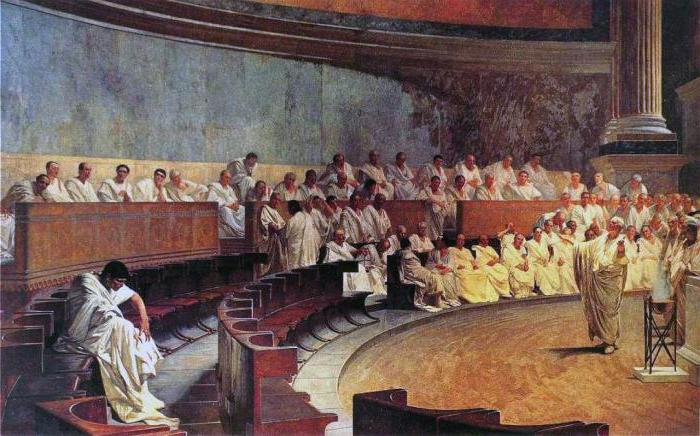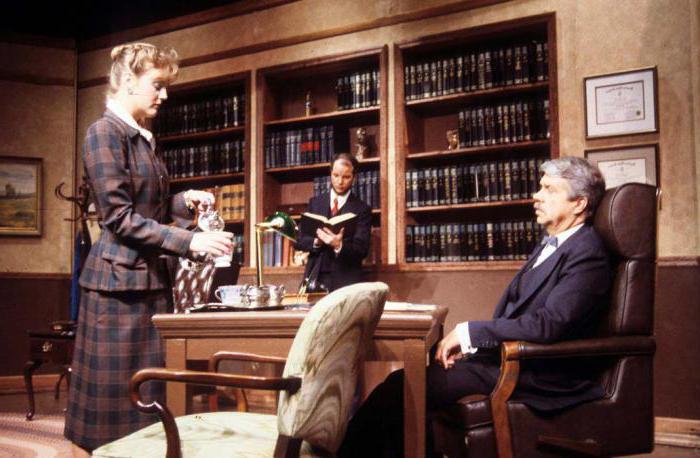Under the easement in Roman law should be understood the real right to use an object belonging directly to another person, in some specific respect. What are land and personal easements? What are their fundamental differences? You can find answers to these and other equally interesting questions in the process of reading this article.
General Provisions

The need for a category of rights distinguishing easements of land and personal in Roman law, was especially evident due to the existence of direct ownership of land. Why? The fact is that there were often cases when a particular part of the land was not endowed with all the properties and qualities necessary for its beneficial use (for example, in certain areas there was no pasture or water). So, for the possible and advisable use of a particular land plot in the economic plan, the need arose to use someone else's land, subject to similar goals.
Similar problems were easily resolved when the land was owned by a community, clan, or tribe. However, after the emergence of the right of private ownership of land directly, the owner of a plot did not take the responsibility to help a neighbor who did not have on his own land, for example, water or pasture.
So, the need has become urgent to secure the owner of one section of the right to use in an appropriate respect a foreign share, usually a neighboring one. It must be added that land that was cut off directly from the public road by the land shares of other owners (or deprived of certain goods, such as water) was not used by law without giving the owner of this plot the right to use it in a similar way to someone else's share. Cities grew, respectively, increased the number of various kinds of structures and structures. That is why the owners of urban land have expressed the need for a legal instrument, through which it would be possible to prevent the absolute dimming of one land by one or another building on the neighboring one.
Satisfaction of need

The needs described in the previous chapter were met in two ways. There was an opportunity to conclude an oral agreement directly with a neighbor on the adoption by him of a certain obligation in favor of this land owner. For example, to make sure that he takes upon himself the responsibility of giving the owner of this land plot exit and exit through his plot onto a public road, or pledges to provide him with ten buckets of water daily. Oddly enough, such a path was not entirely reliable, because this kind of obligation was exclusively personal in nature (a personal easement in Roman law appeared on this basis). So, if the owner of the land, who agreed to assume the obligation, sold his land, then further use of it directly by the neighbor continued exclusively with the permission and consent of the new citizen.
Thus, the satisfaction of basic needs, including obtaining water, grazing cattle or going on a public road, had to be organized in a more durable and reliable way (regardless of the change in ownership of a neighboring land plot).
The introduction of easements

In the process of determining a more reliable and fundamentally durable way to meet the basic needs of society, a legal category such as easements appeared. It is important to note that the strength of their satisfaction in accordance with this legal form was directly in the substantive nature of easement law. So, the object of the latter was the land itself, and not the action of a specific person who took upon himself the responsibility, if necessary, to allow the use of his plot from the neighboring side. That is why the legal entity retained its own right to use in relation to the neighboring plot, regardless of the owner of the land. It should be noted that the easement served as an encumbrance of the land itself, which means that together with it it transferred to the new owner.
In accordance with the historical data cited, easement should be understood as the right to use someone else’s subject, which has a material character, in some respects. It is necessary to add that such a right was in one way or another called for to smooth out the difficulties and inconveniences that arose due to the uneven distribution of certain goods directly between separate plots of land.
More modern category

A little later, along with the easements that arose as a result of the land relations of the neighbors, a different category of rights of a servitude nature appeared. It was distinguished by the exception of a mandatory orientation in favor of a neighbor, as well as on the use of land. Thus, this category belonged to absolutely any property, whether it be a house or a herd of cows. In addition, the operation in question was carried out in favor of another person who was not in neighborly relations with the owner of some property complexes. For example, a person, leaving something from his own property to the heir, at the same time gave the other person the right to use the same property complexes for life (today this situation is called usufruct).
Of course, usufruct appeared much later than the category of easements discussed above, which arose directly on the basis of relations regarding land between neighbors. By the way, Roman lawyers sometimes even oppose usufruct and easements. Nevertheless, specialists in the classical direction, as a rule, also cover the concept of "usufruct" through the term "easement".
Classification of easements. Land easement

As a result of the events described above, land (preial) and personal easements in Roman law. Classification was carried out mainly in accordance with the subject of law. So, an individual as the owner of a plot of land was endowed with a land easement. BUT personal easement belonged to a specific person on personal terms. That land plot, which correlated directly with the establishment of easement, was called dominant. And that piece of land, the use of which in some respects consisted in the maintenance of an easement, was called an employee. Since the land easement did not belong to the individual personally, but as the owner of the dominant share, the change of ownership of the latter automatically caused a change in the subject of the land easement.
Personal easement, which was installed on the thing, did not imply the unconditional removal of the owner from the use of this thing. For example, by providing a neighbor with a easement for grazing cattle on a certain land plot, the land owner somehow retained the right to graze his own cattle there.
Nevertheless, when the simultaneous use by both the owner and the subject of a certain right was impossible (for example, the owner of the land gave the neighbor a servitude right to graze up to twenty goals in his own pasture, but the pasture is unable to feed more than this amount),the advantage in any case was given to the subject of law. It is important to note that personal easement of maintenance - land easement with the possibility of obtaining "fruits". In subsequent chapters, the category of personal easement and its main features are examined in detail.
Personal easement category
The personal easement is in Roman law usufruct. In Digests, it is defined as "Ususfructus est ius alienis rebus utendi fruendi salva rei substantia". Usufruct is nothing more than the right to use someone else's thing and at the same time receive benefits from it. but personal easement in Roman law is mandatory preservation of the integrity of the substances used.
By substance it is necessary to understand directly the essence of a thing. It is important to note that usufruct was considered a lifelong right (less often - for a certain period). Personal easements include usufruct, which under no circumstances made the transition to the heirs of usufructuary. This condition was fulfilled despite the fact that they had every right to do so.
It is important to note that usufruct did not have the opportunity to alienate. I.e, personal easement in Roman law is usufruct itself, which allowed for the possibility of leasing, however, upon the death of the uzkhufructuary, the tenant's right somehow ceased. The usufructuary undertook to use the thing in a careful manner. In addition, the condition for the economic purpose of the subject was to be observed. For example, having received in personal easement vineyard, the individual did not have the right to build on this land. The given operation was excluded even when the principle of profitability would have been realized during its implementation. So, this person had to take all kinds of measures to preserve things in its original condition. Personal easement assumed that the fruits of the thing somehow come into the possession of the usufructuary (in the case of usufruct) immediately from the moment they are mastered in fact.
Additional Information

What other situations existed? As it turned out, the main personal easement in usufruct is in Roman law. So, if someone was given to use a herd, then in accordance with the general rule of usufructuary, he would be obligated to keep the “substance” intact. However, in this case he was vested with the absolute right to alienate individual goals from the herd. A personal easement is usufruct, which under certain circumstances involved even killing animals, when these measures were necessary according to the rules of economic activity. In addition, the usufructuary was somehow to replenish the decline through the acquisition of new heads or offspring. Thus, the herd was maintained at the same level of economic management.
Misuse
It should be noted that the illiterate use of the thing, especially the introduction of changes directly to its economic purpose, in any case led to the obligation on the part of the usufructuary to compensate the owner of the thing for the corresponding damage. Nevertheless, in connection with Roman views, the responsibility of the former did not arise directly from usufruct, but was formed by a special kind of agreement in the process of transferring things directly to usufruct.
At the same time, when a thing underwent significant changes for reasons of a natural nature (that is, without any participation of the usufructuary), there was no responsibility on it, however, the corresponding right in any case terminated. For example, when the pond that was given to usufruit dries, the usufructuary was not entitled to use the dry space for other purposes, even if they were beneficial.
Usus

Considering types of personal easements, it is impossible not to mention usus. In other words, this is the right to use the thing, but with the exception of the right to use its fruits.However, within the framework of a personal kind of needs, the subject of this right, in case of urgent need, could use the fruits. The rest of the presented easement is absolutely similar to usufruct.
In addition to those listed, there were personal easements of a special nature. In accordance with them, it was possible to provide the right to reside in the house, the right to use the labor of a slave or animal, and so on.
Acquisition and loss of easements
To begin with, it should be noted that the easement, as a rule, was established by the will of the owner by means of a unilateral act (for example, in accordance with the will of one individual, the other was granted a lifelong use of a plot of land, a house, etc.) or an agreement (directly between the owner and the subject of easement law ) In addition, it was possible to establish easement through a court decision (for example, in the process of dividing a common land plot between two owners, the judicial authorities could establish in favor of one of the newly formed plots the right to travel and pass directly through another land plot).
Least of all, easement law arose by virtue of law (for example, the father’s usufruct in relation to the property of the subject son). It is interesting to note that in some historical periods of Roman law, the acquisition of easement law by statute was also allowed.
It is important to know that the easement was considered lost along with the destruction of the thing, the use of which was the subject of easement law. It is necessary to add that legal death was equated with death of a physical nature, in other words, we can say, the transformation of things directly into non-current. By the way, personal easement law terminated not only on the actual loss of things, but also in connection with the death of the relevant subject.
As a rule, the right to another thing ceased if there was a combination of this right with the right to own the same thing. For example, the owner alienates a certain thing to the subject of easement law on this thing. Then the following rule applies: no one can be endowed with the easement right to own thing. Why? The fact is that in relation to a specific individual, the right of ownership to this subject is valid. So, easement on her is no longer required. The final point is the termination of the easement due to the refusal of the legal entity or the corresponding non-implementation of it for ten or twenty years.
So, in this article we examined the concept of "easement". We learned what land, personal easements are. We examined their differences, as well as common features. We hope the information was useful to you.